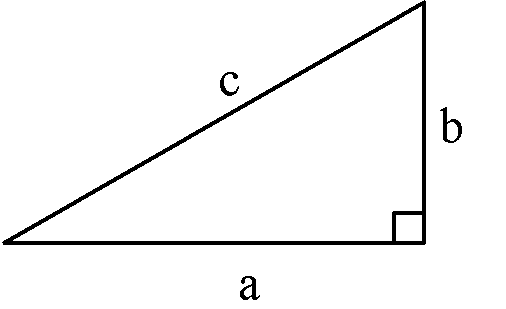As you can see, what makes this natural image of a triangle in your head isn't just three edges and three corners. This triangle really is made up of three EQUAL edges and three EQUAL angles of 60 degrees, what we call an acute equilateral triangle.
What about other triangles you ask? Let's dive in and learn together!
ACUTE SCALENE:
An acute scalene triangle is made up of three different angle measures, all being under 90 degrees. In addition, all three edges differ in length.
ACUTE ISOSCELES:
An acute isosceles triangle is made up of two edges measuring the same length while two angles also measure the same and one does not. However, all three of the angle are under 90 degrees while still adding up to 180 degrees.
OBTUSE SCALENE:
An obtuse scalene triangle is made up of three different edges along with three different angle measures. However, because this is an obtuse triangle, one angle measures larger than 90 degrees.
OBTUSE ISOSCELES:
An obtuse isosceles triangle is made up of two matching edges along with two matching angles. The third angle must be greater than 90 degrees, thus justifying it as obtuse.
RIGHT SCALENE:
A right scalene triangle is made up of an angle measuring 90 degrees with three different edges.
RIGHT ISOSCELES:
A right isosceles triangle is made up of a 90 degree angle and two 45 degree angles along with two equal edges.
Now that why've discussed all the different types of triangles, apply your new and enhanced knowledge! There's some ideas:
- CREATE A MEMORY GAME: Cut tiny squares of paper and draw different sorts of triangles on them, lay them all out face down and see if you can pair up them same types of triangles to get a match!
- TRIVIA: Come up with questions and a point value system, then with a group of friends, play trivia for a fun way to practice your triangle knowledge!
- MAKE FLASHCARDS: Create flashcards by having the triangle on one side and write the side lengths, angle measures and type of triangle on the back. Practice your knowledge by looking at the triangle and saying it's features out loud, check the back after to see if you're right!
- TRIANGLE SCAVENGER HUNT: Take a walk around campus and see how many triangles you can find and name it's features! It's a fun and easy way to practice!
- PRACTICE WITH A GEOBOARD: Take rubber bands and see how many different kinds of triangles you can make on a geoboard!
GOOD LUCK EVERYONE :)








